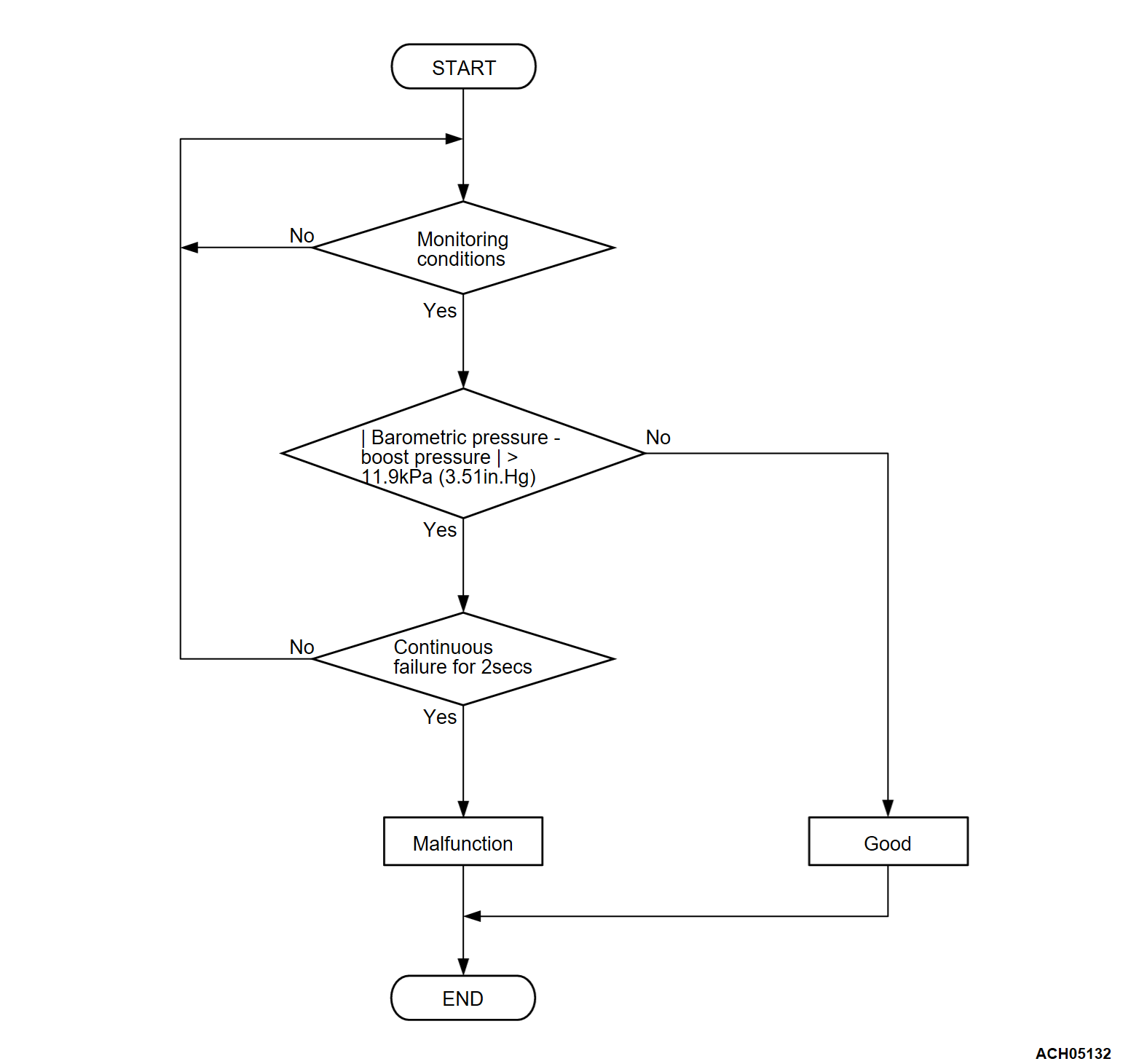DTC P00CF: Abnormal Correlation Between Boost Pressure Sensor And Barometric Pressure Sensor
TECHNICAL DESCRIPTION
The ECM detects abnormality in the sensor by comparing the boost pressure sensor output with the barometric pressure sensor output.
MONITOR EXECUTION
- Continuous
MONITOR EXECUTION CONDITIONS (Other monitor and Sensor)
Other Monitor (There is no temporary DTC set in memory for the item monitored below)
- Not applicable
Sensor (The sensor below is determined to be normal)
- Engine coolant temperature sensor
- Manifold absolute pressure sensor
- Boost pressure sensor
DTC SET CONDITIONS
Check Conditions
- More than 2 seconds have passed since the engine starting sequence was completed.
- Engine coolant temperature is higher than 0°C (32°F).
- Mass airflow sensor output is 6 g/sec or less.
- More than 2 seconds have passed after the above mentioned conditions have been met.
Judgment Criterion
- Difference between boost pressure sensor output and barometric pressure sensor output is more than 11.9 kPa (3.51 in.Hg) for 2 seconds.
FAIL-SAFE AND BACKUP FUNCTION
- None.
TROUBLESHOOTING HINTS (The most likely causes for this code to be set are: )
- Boost pressure sensor failed.
- Boost pressure sensor circuit harness damage, or connector damage.
- Barometric pressure sensor failed.
- ECM failed.
DIAGNOSIS
STEP 1. Using scan tool (M.U.T.-IIISE), read the diagnostic trouble code (DTC).
| caution | To prevent damage to scan tool (M.U.T.-IIISE), always turn the ignition switch to the "LOCK" (OFF) position before connecting or disconnecting scan tool (M.U.T.-IIISE). |
(1) Connect scan tool (M.U.T.-IIISE) to the data link connector.
(2) Turn the ignition switch to the "ON" position.
(3) Set scan tool (M.U.T.-IIISE), read the DFI and MFI-DTC.
(4) Turn the ignition switch to the "LOCK" (OFF) position.
Is the diagnostic trouble code other than P00CF set?
STEP 2. Check of harness damage in UPS5 line between boost pressure sensor connector and ECM connector.
Is the harness wire in good condition?
STEP 3. Check of harness damage in UPS line between boost pressure sensor connector and ECM connector.
Is the harness wire in good condition?
STEP 4. Check of harness damage in E line between boost pressure sensor connector and ECM connector.
Is the harness wire in good condition?
STEP 5. Using scan tool (M.U.T.-IIISE), check data list item 125: Boost Pressure Sensor.
(1) Turn the ignition switch to the "ON" position.
(2) Set scan tool (M.U.T.-IIISE) to the data reading mode for item 125, Boost Pressure Sensor.
- When altitude is 0 m (0 foot), 101 kPa (29.8 in.Hg).
- When altitude is 600 m (1,969 feet), 95 kPa (28.1 in.Hg).
- When altitude is 1,200 m (3,937 feet), 88 kPa (26.0 in.Hg).
- When altitude is 1,800 m (5,906 feet), 81 kPa (23.9 in.Hg).
(3) Start the engine.
- When the engine is idling, 70 - 110 kPa (20.7 - 32.4 in.Hg) (Near the atmospheric pressure).
- When the engine is suddenly revved, boost pressure varies.
(4) Turn the ignition switch to the "LOCK" (OFF) position.
Is the sensor operating properly?
![[Previous]](../../../buttons/fprev.png)
![[Next]](../../../buttons/fnext.png)



